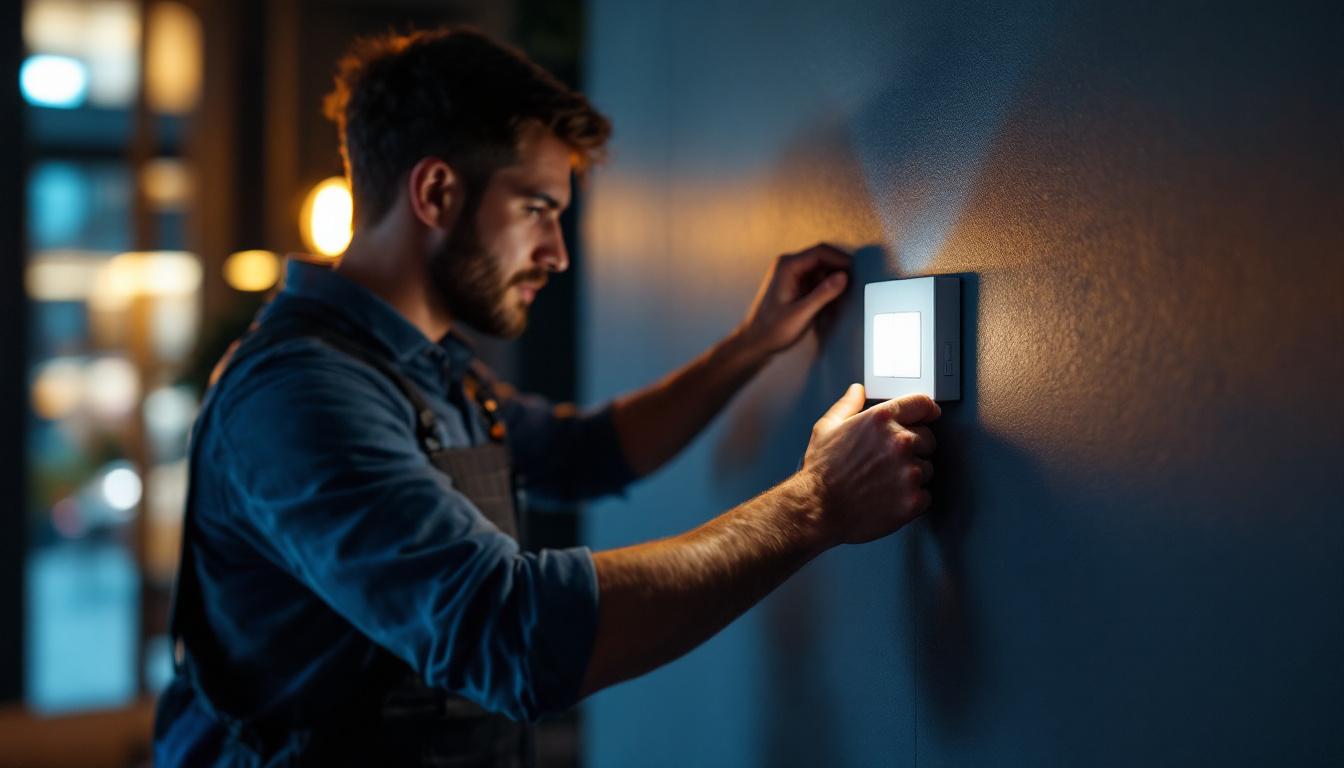
In the world of lighting installation, attention to detail is paramount. Whether working on residential or commercial projects, lighting professionals must ensure that every aspect of their work meets the highest standards. One critical component of this process is the light switch single. This article provides an essential checklist tailored for lighting contractors, ensuring that every installation is efficient, safe, and aesthetically pleasing.
Before diving into the checklist, it is important to understand what a light switch single is. A light switch single refers to a single-pole switch that controls one light fixture or a group of fixtures. These switches are commonly used in residential settings and are essential for managing the lighting in any room. They serve as the primary interface between the user and the lighting system, allowing for easy control and enhancing the overall functionality of the space.
There are various types of light switch singles available, each designed for specific applications. The most common types include toggle switches, rocker switches, and dimmer switches. Understanding the differences between these types is crucial for selecting the right switch for a particular installation. Each type not only varies in design but also in functionality, catering to different user preferences and lighting needs.
Toggle switches are the traditional option, featuring a lever that moves up and down. They are widely recognized for their durability and reliability, making them a popular choice for many homeowners. Rocker switches, on the other hand, offer a more modern aesthetic and are easier to operate, often requiring less force to activate. Dimmer switches allow for adjustable lighting levels, providing flexibility and energy savings, which can be particularly beneficial in spaces where ambiance is key, such as dining rooms or home theaters. These switches can also prolong the lifespan of light bulbs by reducing the amount of power they consume.
Proper installation of light switch singles is vital for safety and functionality. Incorrect wiring can lead to electrical hazards, including short circuits or even fires. Additionally, a poorly installed switch may not function correctly, leading to frustration for the end user. Ensuring that the switch is securely mounted and that all connections are properly insulated is essential to avoid any potential risks associated with electrical systems.
Lighting professionals must adhere to local electrical codes and regulations during installation. This ensures not only the safety of the installation but also compliance with industry standards. Furthermore, taking the time to plan the layout of switches can enhance convenience and accessibility, especially in larger spaces. For instance, placing switches near entry points or at multiple locations for a single fixture can significantly improve user experience. Understanding the flow of movement within a room can also guide the strategic placement of light switches, making everyday tasks easier and more efficient.
To streamline the installation process and ensure quality, lighting professionals should follow a comprehensive checklist. This checklist covers everything from planning to final testing, ensuring that no detail is overlooked.
Before starting any installation, thorough planning is essential. This includes understanding the specific requirements of the project and the preferences of the client. Key considerations during this phase include:
Once the planning phase is complete, gather all necessary materials and tools. Having everything on hand will streamline the installation process and reduce the risk of errors. Additionally, it can be beneficial to create a timeline for the project, which helps in managing client expectations and ensuring that the work is completed efficiently. Documenting any specific requests from the client can also be helpful, as it ensures that their vision is accurately translated into the installation.
Safety should always be the top priority when working with electrical systems. Before beginning the installation, take the following precautions:
These measures help create a safe working environment and protect both the contractor and the client. Furthermore, it is advisable to keep a first aid kit on site and to familiarize yourself with the emergency procedures in case of an accident. Being prepared for unexpected situations can make a significant difference in maintaining safety throughout the installation process.
With planning and safety precautions in place, it’s time to proceed with the installation. Follow these steps for a successful light switch single installation:
Following these steps carefully will help ensure a successful installation that meets both safety and functionality standards. Additionally, it is wise to provide the client with basic instructions on how to operate the new switch, especially if it includes features like dimming or smart technology. Offering maintenance tips can also enhance the longevity of the installation, ensuring that the switch continues to perform optimally over time. This level of service not only builds trust with the client but also establishes a reputation for thoroughness and professionalism in your work.
After installation, testing the light switch single is crucial to confirm that it operates as intended. Proper testing helps identify any issues that may need to be addressed before completing the project.
Once the switch is installed, conduct a series of functional tests:
These tests help ensure that the installation is not only functional but also reliable over time.
If any issues arise during testing, troubleshooting is essential. Some common problems include:
Addressing these issues promptly helps maintain the integrity of the installation and ensures client satisfaction.
Regular maintenance of light switch singles is essential to ensure their longevity and performance. Lighting professionals should educate clients on proper care and maintenance practices.
Clients should be encouraged to follow these best practices to keep their light switches in optimal condition:
By following these practices, clients can extend the lifespan of their light switch singles and maintain a safe environment.
While many maintenance tasks can be performed by clients, there are situations where professional assistance is necessary. Clients should be advised to call a lighting professional if:
In these cases, a professional assessment is crucial to identify and resolve underlying issues safely.
Light switch singles play a vital role in the functionality and safety of lighting systems. For lighting professionals, adhering to a comprehensive checklist ensures that installations are performed with precision and care. From planning and installation to testing and maintenance, each step is essential in delivering high-quality work.
By following this essential checklist, lighting contractors can enhance their reputation, ensure client satisfaction, and ultimately contribute to safer and more efficient lighting solutions. Whether working on a small residential project or a large commercial installation, the principles outlined in this article serve as a valuable guide for lighting professionals.
In a constantly evolving industry, staying informed about best practices and new technologies will further empower lighting contractors to excel in their field. With diligence and attention to detail, the installation of light switch singles can be a seamless process that enhances the overall lighting experience for clients.
Ready to elevate your lighting installations with the best materials on the market? Look no further than LumenWholesale for all your lighting needs. Our extensive selection of spec-grade lighting products ensures you have access to the highest quality options for any project. With unbeatable wholesale prices and the convenience of free shipping on bulk orders, you can trust LumenWholesale to provide superior value without the middleman markups. Make your next project shine by choosing Wholesale Lighting at the Best Value. Experience the difference in quality, affordability, and service with LumenWholesale today.

Discover the ultimate resources lighting contractors rely on to seamlessly transition from fluorescent to LED bulbs.

Discover the evolution of artificial light and its impact on modern businesses.

Discover innovative hacks and expert tips for smart lighting contractors using 4ft LED lights.

Discover how LED drivers are revolutionizing the lighting industry and impacting contractors’ profitability.